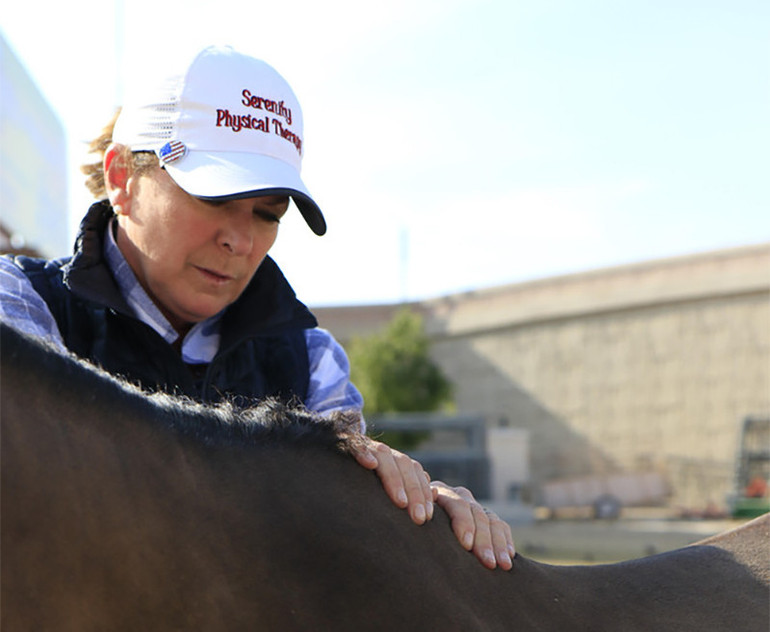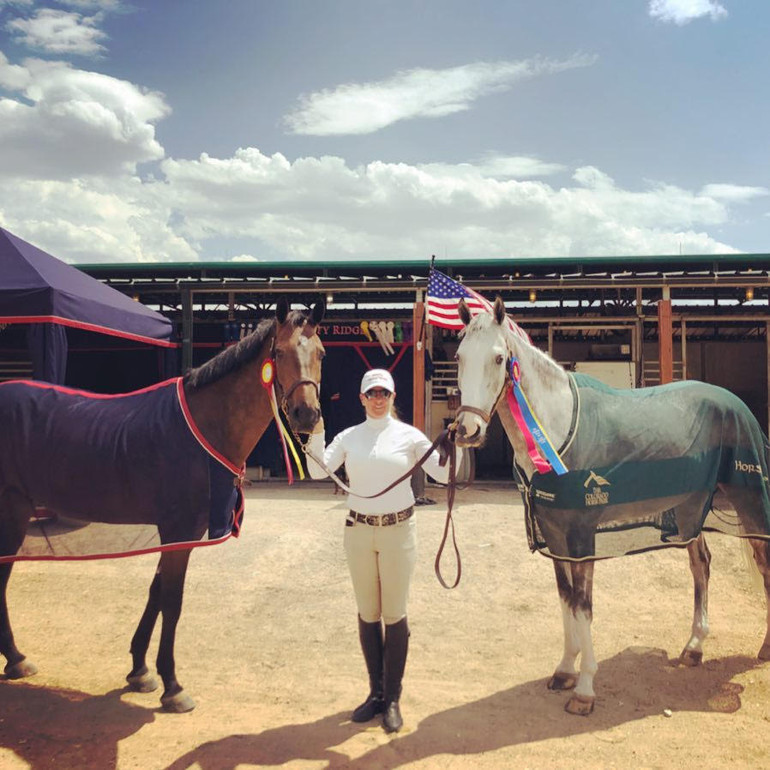Fully exploited by human athletes, proprioception is a therapeutic goldmine still awaiting its Eureka! moment by those caring for equine athletes
Text by Kim F. MIller
Sharon Classen is on a mission.
In a long career highlighted by serving as lead physical therapist for last fall’s World Equestrian Games, the busy practitioner wants everybody to understand the critical benefits of proprioception. And she does mean everybody: veterinarians, trainers, owners, riders, grooms… her neighbors: everybody!
Why the urgency?
“Because it’s critical to every phase of training and conditioning for an equine athlete, and too few people know it,” she explains.
We caught up with Sharon in between her presentations at April’s invite-only High Performance Sports Medicine Symposium with athletes and veterinarians and treating the 30-40 horses and riders she works with in a typical week. Given her insanely busy schedule, we cut right to the chase.
Kim: What is proprioception?
Sharon: Proprioception is the sense of where body parts are and the ability to move them in response to stimuli. For horses and humans, it’s our sixth sense, after hearing, smell, taste, touch and sight.
For a horse, proprioception is the awareness of its body position and movements, including where they place their limbs and feet. There is unconscious proprioception, which coordinates a horse’s posture and basic locomotion, and conscious proprioception, which facilitates more complex locomotor or movement tasks.
Kim: In what phases of horse care is it important?
Sharon: Absolutely everything! Prevention, maintenance, rehabilitation, training, conditioning, recovery, post-surgery, performance enhancement and increasing longevity. Full athletic recovery is not restored without incorporating proprioception.
Kim: Why?
Sharon: When a horse does even regular work, and especially in elite level work in any discipline, you have small traumas to the muscles and joints. These traumas alter the proper neuromuscular pathways and can cause pain. Pain inhibits proprioception and can alter the muscle activation patterns, thereby causing compensatory patterns. These new compensatory patterns can lead to injury. You need to re-educate that process and that’s what proprioception does.
Kim: Where does proprioception fit into your work as a physical therapist?
Sharon: It’s as integral as strengthening and stretching.
Kim: But different than stretching, right?
Sharon: Right. Stretching may happen during a proprioception exercise, and vice versa, but they are not the same. Stretching lengthens and supples muscles and increases range of motion. Stretching is needed to restore full range of motion, which allows for you to strengthen maximally. Proprioception re-educates the neuropathways that control the muscles and joints. It makes the horse consciously aware of their movements, integrates the mind-body link, balances reactions and improves strength, agility and quickness.
Kim: How do you build proprioception in a horse?
Sharon: Proprioception exercises are all about maintaining balance. Walking a horse on uneven terrain and training on different surfaces are great starts. Exercises can be as simple as holding up one of the horse’s legs, which requires them to shift their weight to maintain balance. Tail pulls do the same thing. Covering the horse’s eyes while doing these exercises eliminates vision from the balance equation, requiring more proprioception effort and development from the muscles. Try it yourself by standing on one leg and closing your eyes. It’s not easy!
A physical therapist should do or supervise these exercises for proper execution and safety.
You don’t need special equipment to build proprioception, but there are some good products that can help. Having horses spend time standing on Theraband Balance and Stability Trainer pads for even just three minutes a day – once they get comfortable on them – builds proprioception – and core strength. ComfortStall therapeutic flooring requires horses to make tiny muscle movements to maintain balance, so it’s great for everything from safe rehab to recovery from regular exercise for healthy horses.
Kim: Is proprioception understood and valued in human sports medicine?
Sharon: Yes! To the point that it’s not even singled out as “proprioception” exercises. It’s just integrated into everything that constitutes physical therapy, which is thoroughly embraced by human athletes. LeBron James, Lindsay Vonn, Tom Brady, Tiger Woods…They all do physical therapy for prevention, injury treatment, performance enhancement, and longevity. Proprioception is built into their work-outs, I guarantee you.
Kim: Where are equestrian sports in understanding its importance?
Sharon: Nowhere near where they should be. At the recent high-performance gathering, I presented a comparison of how to build a better athlete and used a comparison of human and equine athletes. Proprioception is a simple foundational component of a therapeutic exercise program that is missing or overlooked for equine athletes. This is part of a larger problem: the lack of understanding about what the physical therapist’s education and skills can bring to equine athletes in all phases of their management.
Physical therapy, and the proprioception it entails, are widely embraced as the gold standard in human sports medicine. I hope that this will be integrated into equine sports medicine.
There were some encouraging responses at the High Performance Symposium. Some of the sport’s top vets, many of them responsible for USET team horses, are fully on board. Completely unsolicited, I had human medical doctors, who specialize in regenerative therapies (PRP and stem cell therapies, etc), tell the group that physical therapy is critical to the success of their treatments, and proprioception exercises are inherent to physical therapy. The Symposium attendees were comprised primarily of veterinarians and one of the orthopedic surgeon speakers told them he would not proceed with a surgery unless the athlete or patient promised to follow it with physical therapy.
Kim: Who is your main target in educating the horse world on proprioception’s importance?
Sharon: Trainers. I see them as the counterpart to coaches in the human sports world. Vets understand the benefits and can prescribe physical therapy, but it’s the trainers who are on the front lines in doing the daily work that has so many benefits for literally any horse in any phase of its athletic career.
Kim: How can we regular horse owners learn to safely incorporate proprioception into our horse’s care program?
Sharon: Below are some simple initial proprioception exercises that anyone can start. Again, they should be done by or with the close supervision of a physical therapist until you are sure of doing them correctly.
Simple Progression of Proprioception exercises:
1) With horses standing square – lift one limb at a time and hold for 10 seconds. Start with the front limbs, then go to the hind limbs. Watch for any compensation or changes of balance with the horse.
2) Increase the difficulty of the above exercise by leaning into the horse, while lifting one of its legs. Lean into the side with the lifted leg and move your weight gradually from side to side to make him work harder to balance.
3) The next level of difficulty is doing the above exercise while the horse’s eyes are covered.
4) More advanced proprioception exercises involve using balance pads, like Theraband’s Blue Soft Stability Trainer pads, that are available through Amazon. Start by having the horse stand with its front feet on the pads, then its hind feet, then all four. You can start out at three minutes daily and will be able to decrease to three times a week after three weeks.
5) Trot over ground poles placed 4.5 feet apart.
6) Trot over elevated cavaletti.













